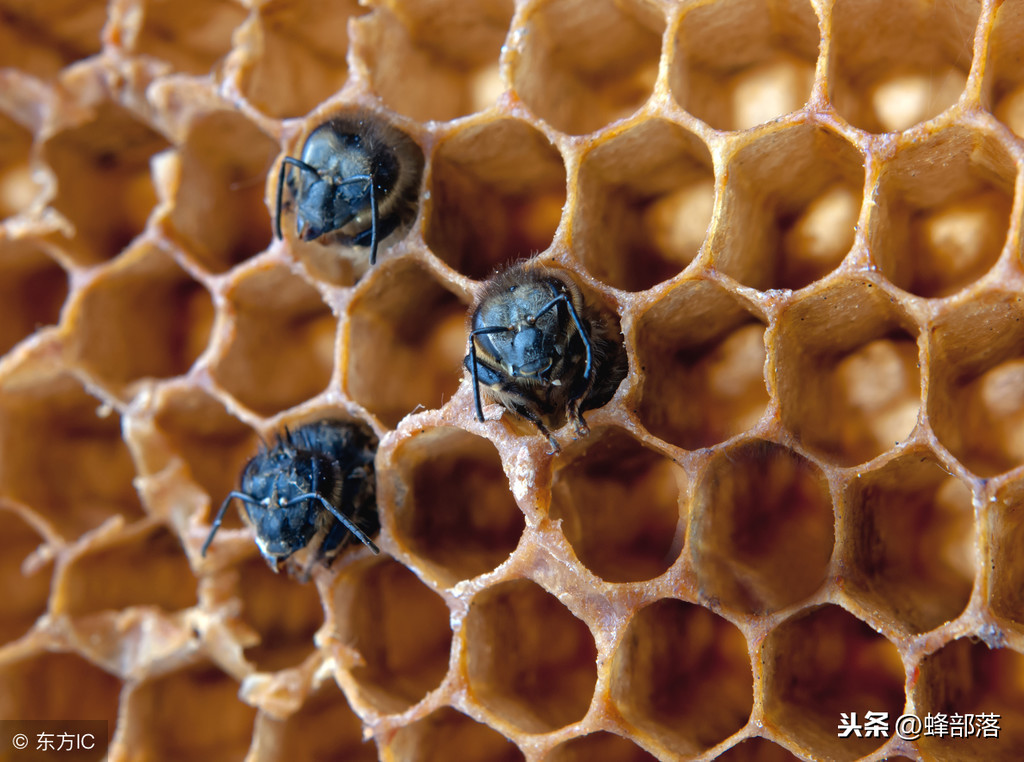Introduction: Recently, a netizen chatted with the bee tribe and said a problem, he once found in his own bee colony that the lid spleen bit through the lid is not a bee, but a fly. It is reasonable to say that the eggs laid by bees hatch out of bee larvae, so why do bees "hatch" flies? Are our beekeeper friends lying or is it really going on? Today the bee tribe came to reveal the truth to friends.

<h1>1. Will flies be produced in the spleen of the capper? </h1>
In fact, to say the above problem, our beekeepers are not lying, this situation should be found by many friends in the process of our beekeeping, but they did not pay attention to whether the flies entered from the outside or came out of the lid spleen. Needless to say, these flies do not enter from the outside, they do come out of the lid spleen, and they are also hatched by bees, so what is this fly?
<h1>Second, the humpback fly</h1>
This fly is a type of legendary parasitic fly, commonly known as the humpback fly. The humpback fly is a species of diptera in the family Diptera that mainly harms bee larvae, although it occurs occasionally, but it is not very harmful to bees. The humpback fly is generally black , with a large , raised abdomen , a small head , generally only 3 to 4 mm , three segments visible on the abdomen , dark red eggs , and maggots as maggots.
<h1>Third, the way of parasitic bees</h1>
Adult flies of the humpback fly generally enter the hive from the nest door, and then lay eggs on the body of the bee larvae, generally 3 hours after egg laying the eggs will hatch, the hatched humpback fly larvae bite through the bee larval body wall into the bee body to cause the bee larvae to die, the humpback fly larvae feed on the bee's body fluids in the dead bee larvae, after 6 to 7 days the humpback fly larvae will leave the bee larva carcass, crawl out of the bee larva carcass, and then bite through the lid spleen, pupate in the dirt at the bottom of the box, The general pupal period is 12 days.
This is the process of humpback fly parasitizing bees, from this process we can find that in fact, humpback fly parasitic bees after drilling out of the nest room of adult humpback fly adults is unlikely, if our beekeeper friends want to see, should see maggots, after all, humpback fly larvae from the bee larvae carcass did not feather. So why do our beekeeper friends see humpback flies coming out of the nest?
<h1>Fourth, the reason why the humpback fly comes out of the nest</h1>
In the view of the bee tribe, the possibility of humpback fly feathering directly in the nest room is still not large, but if the nest room is too old, the beekeeper has not replaced and cleaned the nest spleen for a long time, resulting in the humpback fly did not climb out of the nest room when the bee larvae carcass did not crawl out, but directly feathered in the nest room, so there is a phenomenon of humpback flies in the lid spleen that our beekeeper friends see.
<h1>V. How to prevent it? </h1>
Humpback flies are not harmful to the bee colony, and generally humpback flies only invade weak groups, so in the breeding process to develop the habit of raising strong groups, to avoid humpback flies invading the bee colony, while the wax chips at the bottom of the hive should be cleaned regularly and thoroughly, keeping the inside of the hive clean, which has a certain effect on the prevention and control of the parasitism of humpback flies.
The image comes from the Internet, if there is any offense, please contact to delete